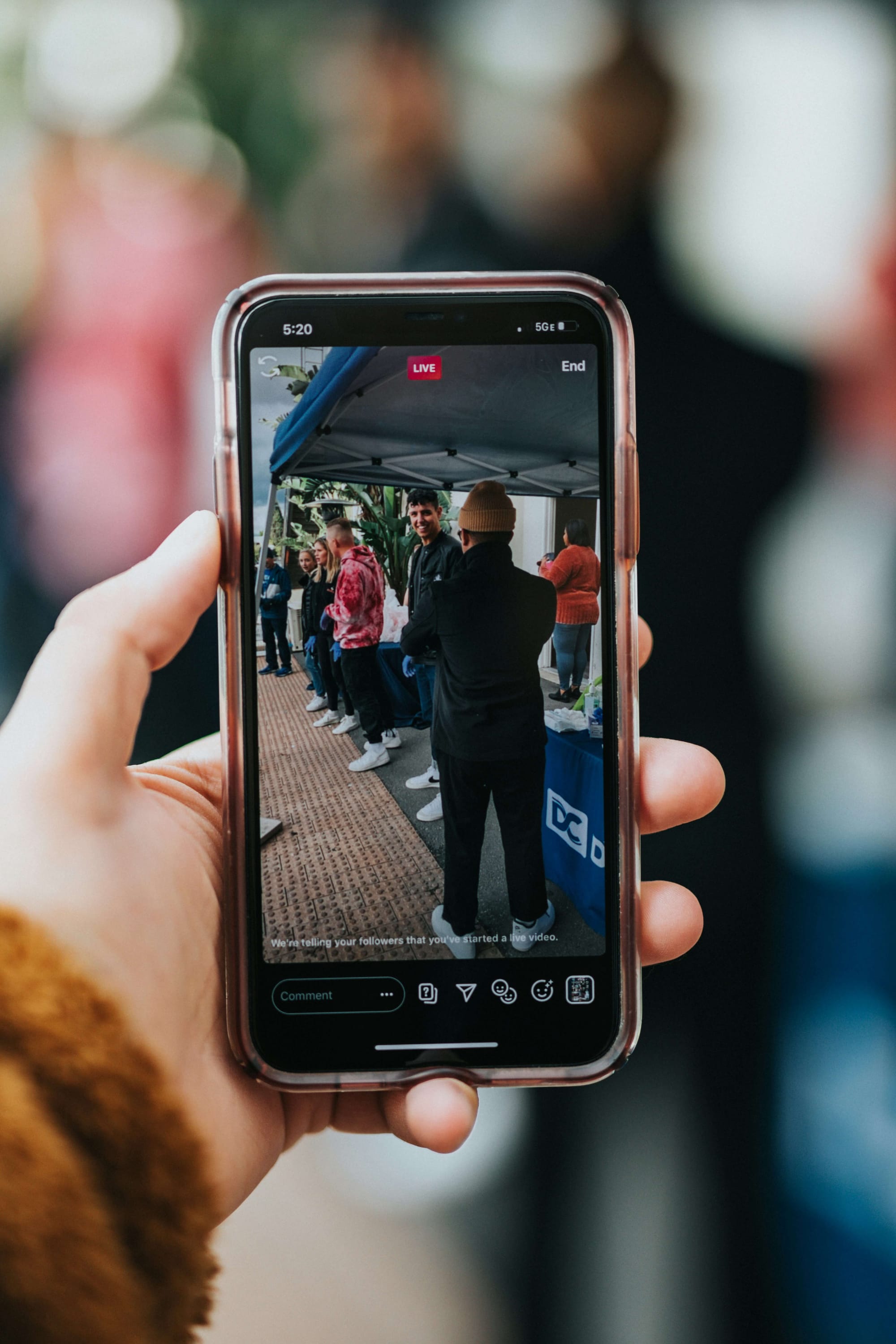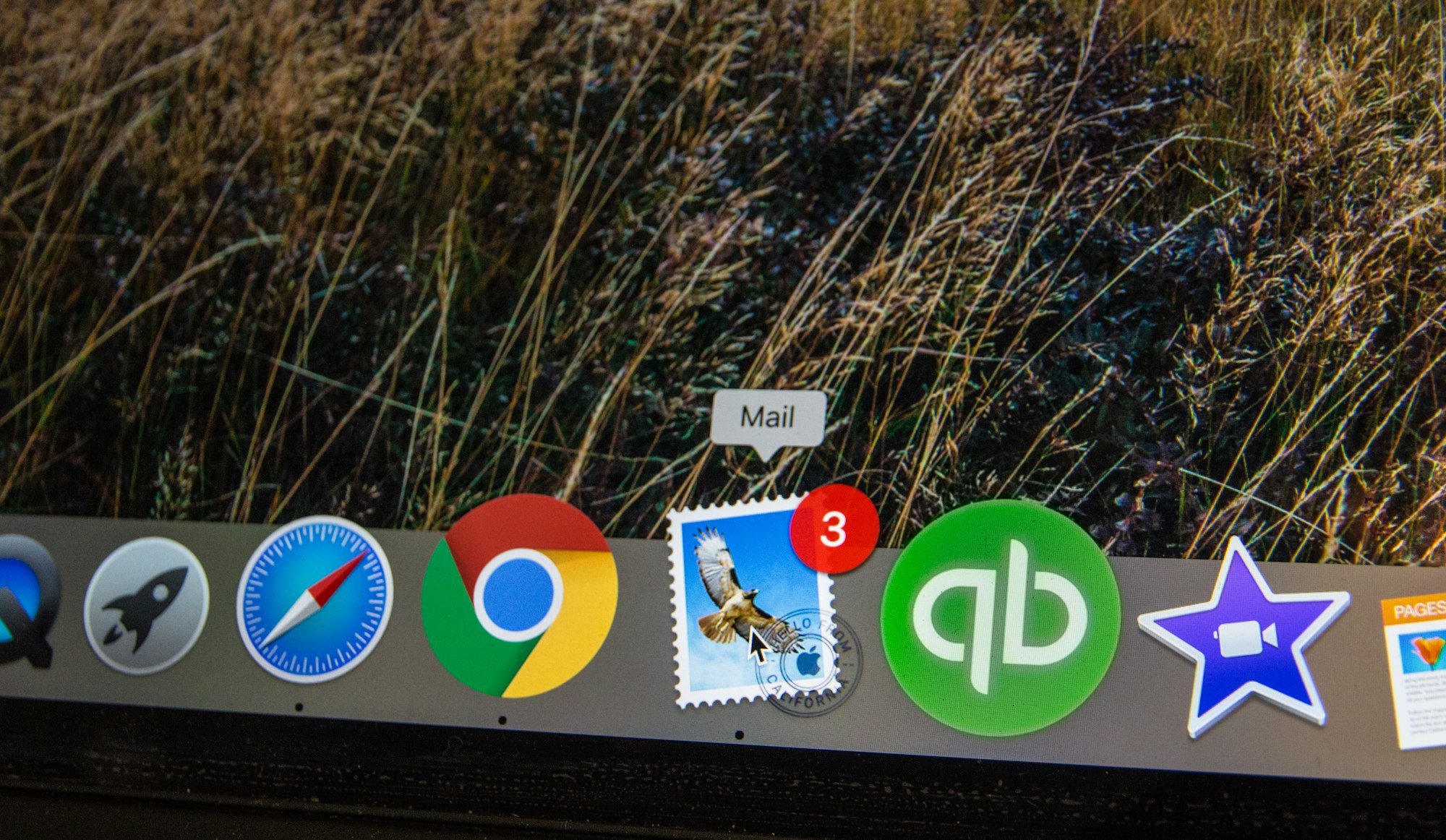Personalization has come a long way. What was once simply a customer’s name in an email has now become a powerful tool for boosting customer loyalty and engagement. In fact, it is so powerful that 40% of consumers purchase more from retailers with personalization across all channels.
However, personalization isn’t just about connecting with customers — it can also improve the shopping experience to help optimize conversion rates and purchase frequency.
Now, let’s dive into some of the best personalized shopping experiences and explore the tactics companies use to make them a success.
Uniqlo Locates the Perfect Personalization

Personalization Tactic: Location
Benefits: Ensures a consistent shopping experience and prevents customer confusion
Uniqlo is taking the world by storm. With nearly 2000 stores across 10 different countries, Uniqlo clearly understands the benefits of selling internationally!
The interesting thing here is that not every country receives the same products and services. This could spell disaster for their online sales if customers in one country believe they have access to services that are only available in another region. However, Uniqlo considered this possibility and uses location personalization in order to mitigate this issue.
Personalizing by location is one of the easiest ways to build customer loyalty and avoid negative customer experiences. Uniqlo does an excellent job utilizing this tactic by redirecting online customers to country-specific web domains.
When you compare the Uniqlo Canada and USA homepages, you’ll notice converted currencies, targeted calls-to-action and regional events.

Currency is probably the most common source of confusion and frustration in ecommerce, particularly in countries that use the same currency unit (such as dollars in the United States, Canada, and Australia).
I don’t know about you, but as a Canadian I’ve added items to my cart because of the great prices only to realize at checkout that these great prices are in USD. All of a sudden, my shopping cart doesn’t look so appealing and I ultimately end up abandoning the purchase.
Thankfully, Uniqlo’s Canadian site automatically converts currencies. Doing so ensures less confusion during the shopping experience and also helps consumers make easier purchase decisions by doing the conversions for them.
Uniqlo takes this exceptional location-based personalization experience even further by taking the issue of shipping into account. Since Uniqlo doesn’t offer shipping to Canada, they don’t include any shopping cart functionality on the Canadian website.
While the lack of Canadian shipping will disappoint some consumers, it eliminates possible friction in the shopping experience and ensures no broken hearts at checkout. This ensures that their customer experience is consistent and honest with every purchase, proving that good personalization is always in style.
Everlane Creates a Homepage Just for You

Personalization Tactic: Gender
Benefits: Streamlines the shopping experience and increases conversion rates
Personalizing your homepage by gender is a no-brainer for industries like apparel and is dead-easy to do — just look at Everlane. Known for their well-priced basics and their “radical transparency” in manufacturing and distribution, the fashion retailer has quickly built a well-earned and even better deserved reputation.
When it comes to their method of personalization, they’re not using any complex algorithms or machine-learning code. Instead, Everlane simply asks customers whether they prefer men’s or women’s styles. From that point forward, the homepage will only show products and announcements that are relevant to each customer’s preferences.
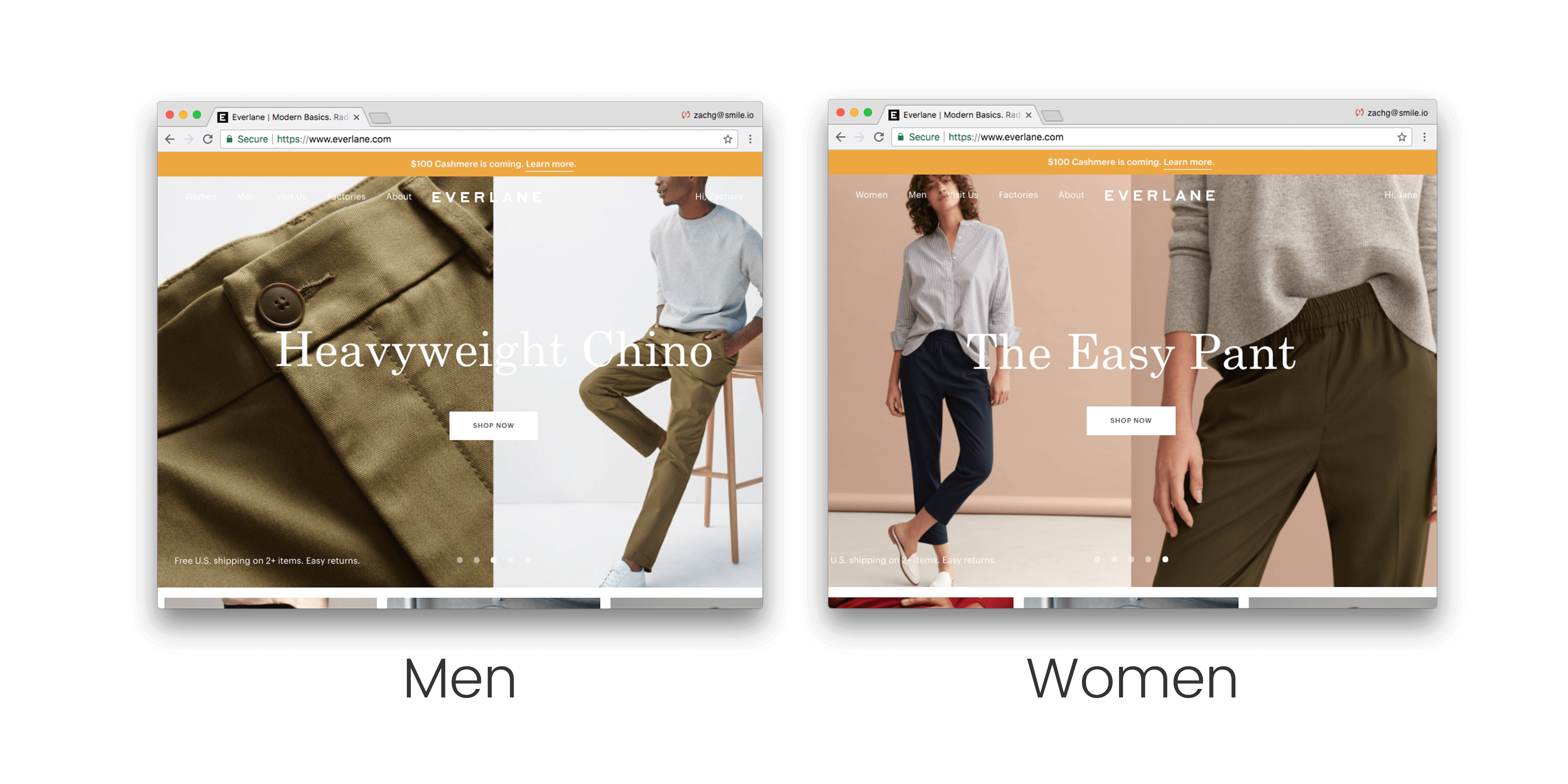
The beauty of this personalization tactic is that it creates a frictionless shopping experience, because it immediately presents customers with relevant products right from the homepage.
Without personalization, companies with diverse target segments like Everlane would struggle to resonate with their entire audience at first glance. In fact, studies actually show that 74% of consumers become frustrated when shown content that is not relevant to their interest.
You’ve probably experienced this yourself in a large department store. Chances are the product section you were looking for was not at the entrance, forcing you to walk through the whole store and commit more time to an errand that should have taken a fraction of the time. Due to the programmable nature of ecommerce, we can actually begin to address inefficiencies that are otherwise unavoidable at physical retail locations.
At Everlane, customers avoid this headache: instead of having to navigate their way to a relevant section, site visitors are pulled into the shopping experience immediately — an experience that ultimately leads to higher clickthroughs and conversions.
Starbucks Takes Birthdays Seriously
Personalization Tactic: Birthday rewards
Benefits: Strengthens customer relationships, resulting in improved brand loyalty and purchase frequency
Without a doubt, Starbucks delivers one of the best rewards program experiences in the world. For many, it stands as the reference point of what makes an effective rewards program: points, VIP tiers, gamification, mobile, and of course personalization. While Starbucks utilizes numerous personalization tactics, one particular tactic stands out from the rest: the free birthday reward.
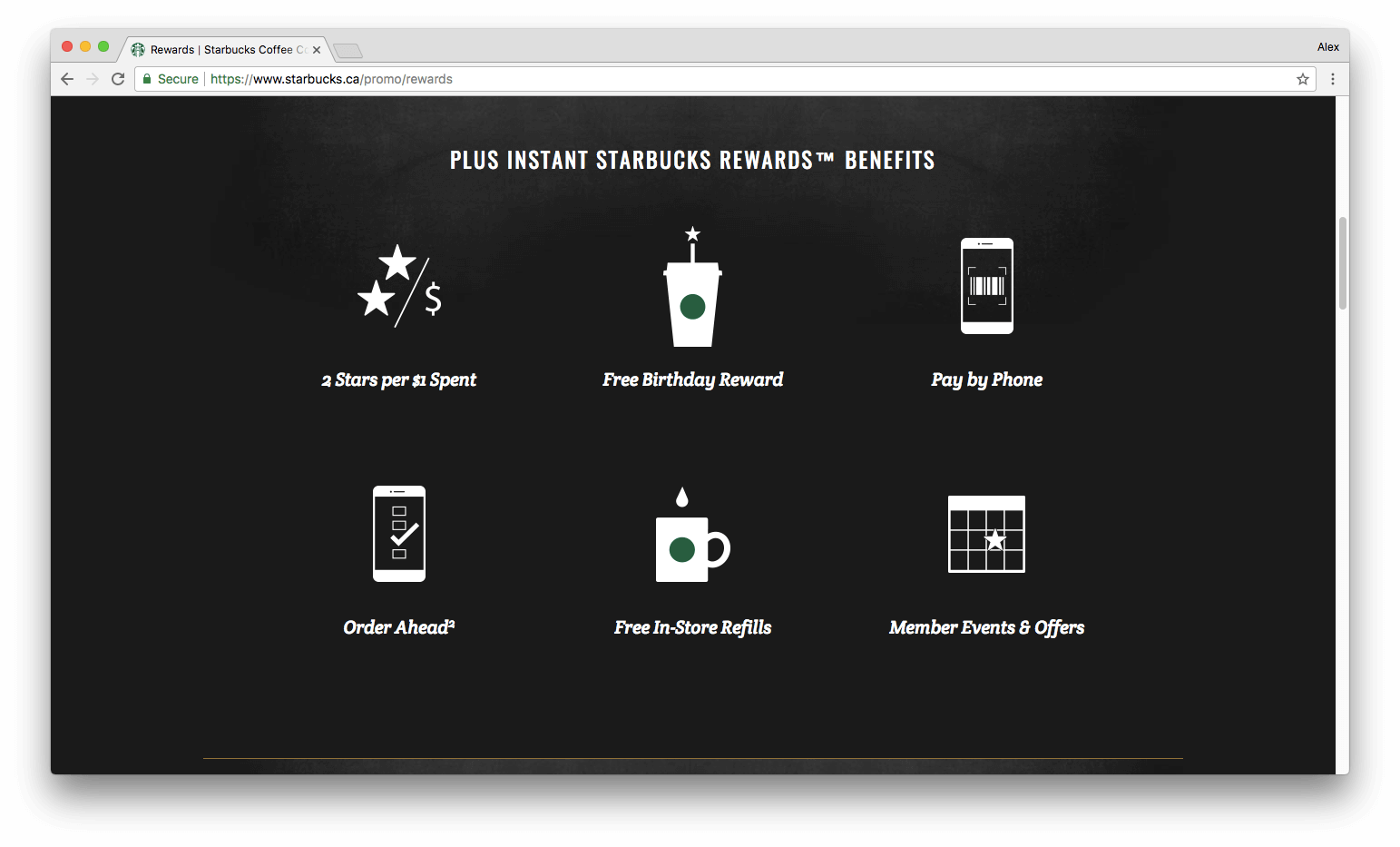
It’s the reward that got me to sign up in the first place and it continues to be an effective way to deepen customer relationships and maintain strong brand loyalty.
Birthday rewards are one of the easiest ways to deliver a personalized shopping experience because they both surprise and delight customers. If there’s one day out of the year that people feel entitled to the VIP treatment, it’s on their birthday.
Since most program registrations require the customer’s date of birthday, remembering a customer’s birthday is really quite easy. From there, it’s easy to create an automated email campaign that sends customers a message and accompany reward on their birthday.
This personalization is especially effective at strengthening customer loyalty because the average consumer doesn’t expect companies to remember their birthday. Seeing as birthday rewards play on the psychological concept of reciprocity, where we feel the need to give back to those who have done something for us customers will reciprocate the small reward with increased brand loyalty.
With higher purchase frequency and the tendency to refer the brand to others wrapped up into one tidy birthday package, Starbucks’ birthday rewards not only make their customers feel like one in a million but also ensures their program remains second to none.
Sephora Knows You Inside and Out
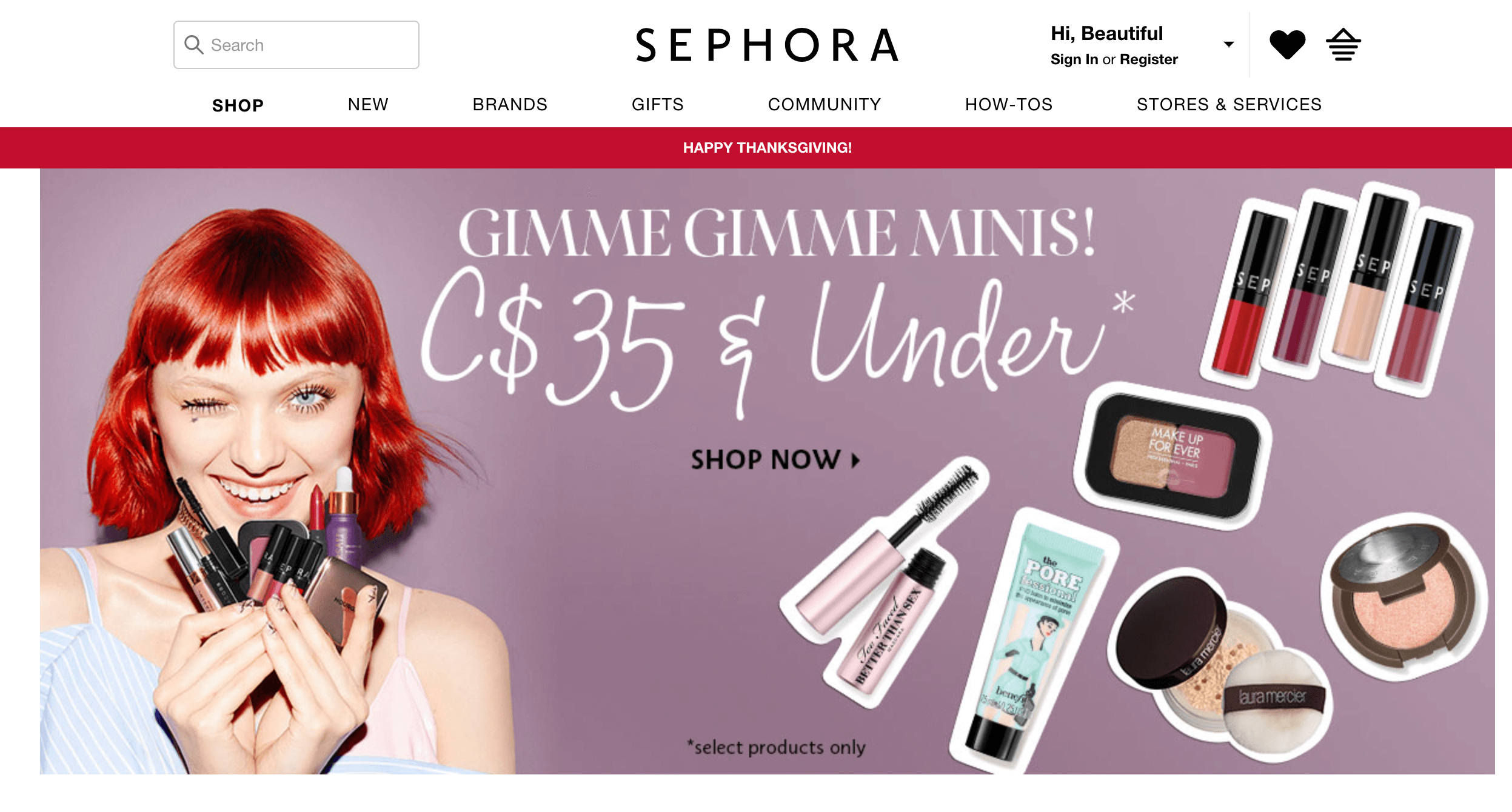
Personalization Tactic: Unique customer profiles
Benefits: Streamlines the shopping experience and increases brand loyalty
Sephora takes personalized shopping to a whole new level with their Beauty Insider rewards program. Like Everlane, Sephora uses simple questions to build personalized customer profiles which are then leveraged to deliver relevant product recommendations. The difference here is the complexity and detail of the personalization.
Where Everlane uses its gendered personalization in more passive methods like a personalized homepage, Sephora delivers personalized recommendations with the help of the Beauty Traits profile. With so many variables at play when it comes to cosmetic preferences (such as skin tone, hair color, and eye color), Sephora understands that the more they know about a customer, the better their recommendations will be.
Additionally, Sephora uses this information to match customers up with similar profiles through Beauty Match — a new personalization feature that allows shoppers to sort product reviews by people who share similar beauty traits.
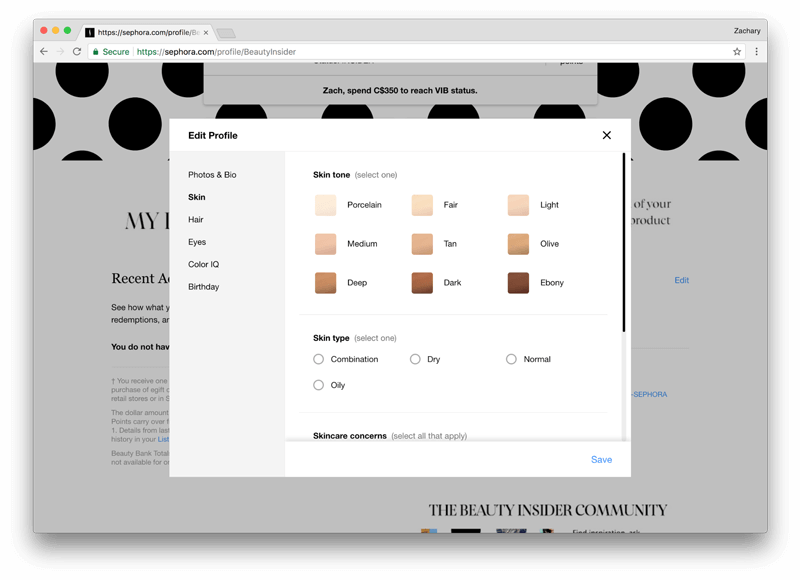
These personalized recommendations not only facilitate the shopping experience for makeup experts, but will help cosmetic newbies begin their journey with ease. In fact, by eliminating the anxiety often associated with shopping for makeup for the first time, Sephora is handily building a strong base of loyal customers.
Sephora also leverages their existing customer base by building communities where customers with similar characteristics (such as acne-prone skin) can share their experiences with products and tips about managing their skin type.
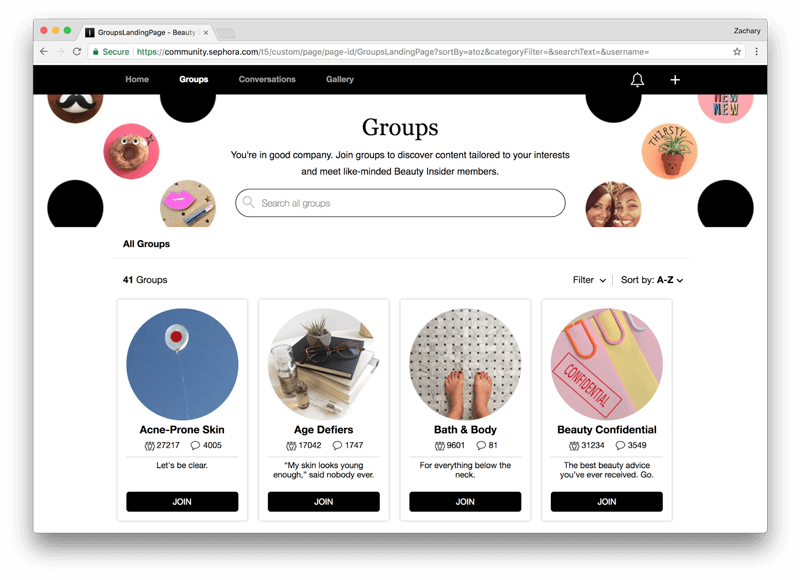
Combining Sephora Groups with the Beauty Traits profile and one of the best VIP rewards programs around creates an environment that feels approachable and personal, leading to higher brand loyalty and customer satisfaction.
Airbnb Takes You Where You Want to Be
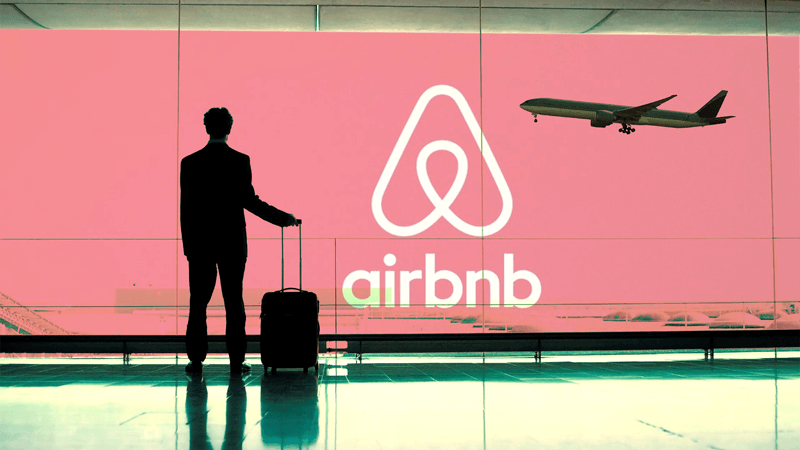
Personalization Tactic: Past activity and purchase history
Benefits: Creates a positive association between the brand and experience, thus strengthening brand loyalty
A few months ago I went on a weekend trip to New York City, and it was absolutely incredible. My friend and I booked a Brooklyn apartment through Airbnb and couldn’t have been happier with the experience. In fact, we were already planning our next visit on the way home!
Even with all of that excitement, though, the idea had already fallen to the back of my mind several weeks later. That is until I received the following email from Airbnb:
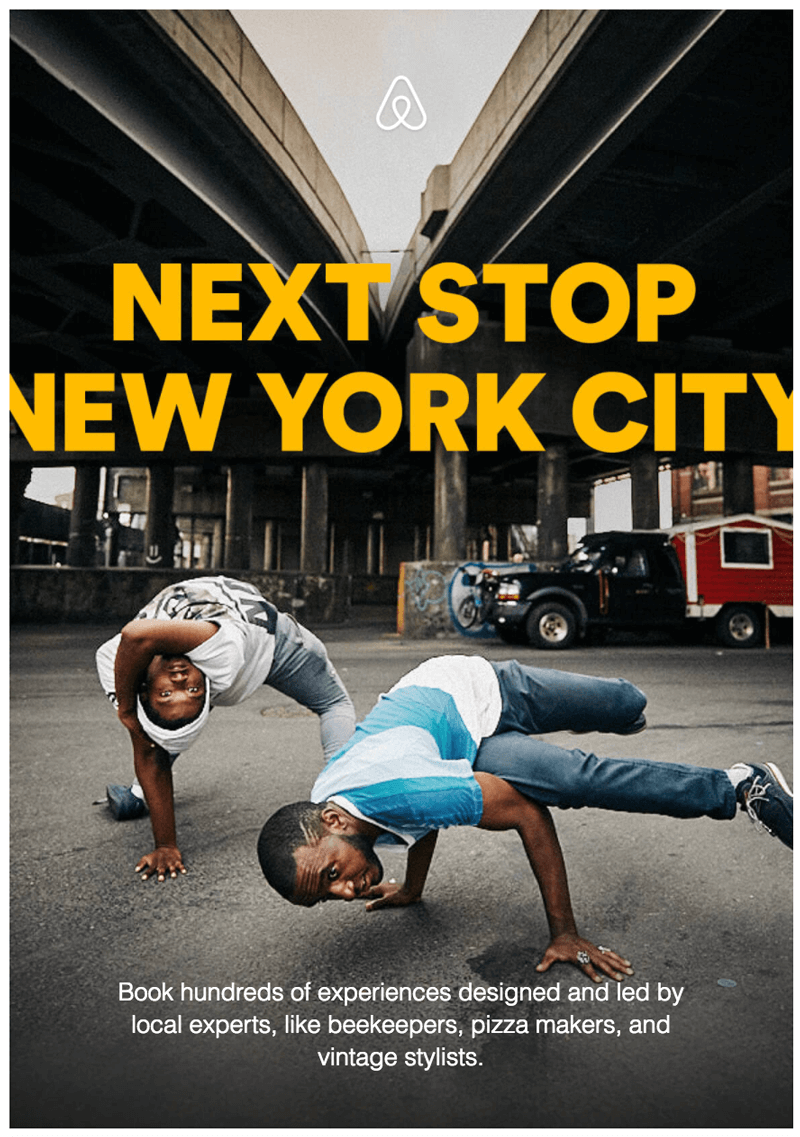
Suddenly, I was craving New York pizza.
My experience is only one example of how Airbnb does an excellent job creating personalized emails and content based on customers’ past bookings. In this case, Airbnb is using powerful content to create an association between my positive experience in New York City and the Airbnb brand. This is just one of many powerful email marketing strategies.
This personalization continues on their website. When I visit Airbnb’s homepage, I’m still seeing more New York City experiences listed in addition to other destinations associated with my search history.
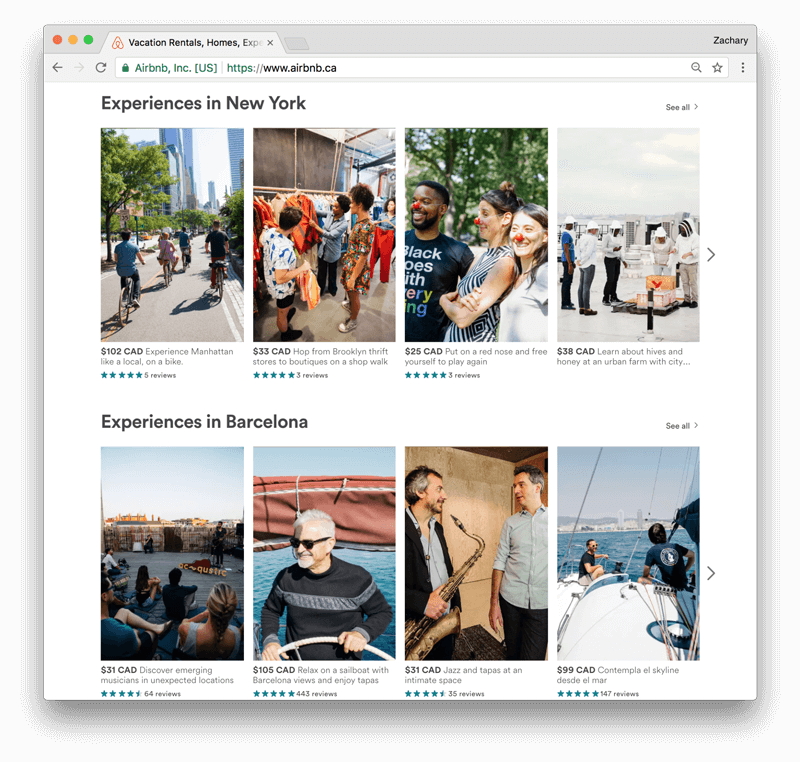
At this point, I can’t imagine using any other service to book my next accommodations. The key to Airbnb’s success and reputation is that they’ve established their authority in the travel space. By leveraging personalized recommendations and enlisting city experts to develop city guides and unforgettable travel experiences, they’ve crafted a brand and image that customers can’t wait to interact with again.
It’s something I like to call reinforced personalization: recommendations with the expert stamp of approval.
Personalization is Possible - and Necessary!
When you look at each of these personalized shopping experiences, you’ll notice that personalization doesn’t have to be complicated. Big or small, any degree of personalization can make a huge impact on the customer experience.
While many of the brands listed here were larger retailers, these tactics aren’t reserved only for them. By investing in personalization efforts such as birthday rewards, product recommendations, and location, you can deliver an outstanding customer experience to every customer, no matter who they are or what they’re looking for.
Innovation after innovation, it’s only getting easier to create personalized shopping experiences in the ecommerce space. All you need to do is start exploring.


